Mopani Rest Camp, named for the mopane tree with its butterfly-shaped leaves that dominates the plantlife of the northern Kruger National Park, is located just south of the Tropic of Capricorn. From its hilltop vantage point, the camp offers splendid views over the Pioneer Dam (with a rich aquatic birdlife) and the mopane plains beyond.

Mopani entrance

Mopani bungalow
Mopani has an unfair reputation for not being a very prolific game viewing area of the Kruger Park, mostly because the mopane shrub can get extremely thick and difficult to see through.

Impalas displaying just how thick the mopane’s can get!
However, if you choose your routes carefully, the Mopani area has very much to offer; the best drive is undeniably the circular route made up of the S49, S50 and S143 gravel routes to the east of the camp that skirts the Mooiplaas and Tinhongonyeni waterholes and the Nshawu Vlei (marsh). Mopani, and especially the area around Tinhongonyeni waterhole, is a hotspot for sightings of the rarer antelope and large birds like the kori bustard, ground hornbill, ostrich and secretary bird. In fact, Tinhongonyeni is one of the best waterholes in the entire Kruger National Park for overall game viewing, and a couple of hours there will assuredly be time well spent. Elephant and buffalo thrive in the Mopani area (there’s a herd of buffalo in the vicinity more than 1,000 animals strong) and we’ve had a number of good lion and cheetah sightings in the district.

Buffalo in rainy weather

This buffalo wasn’t overly happy to have his way blocked!

Unhappy elephant!

Eland – a rare sighting in Kruger – at Tinhongonyeni waterhole
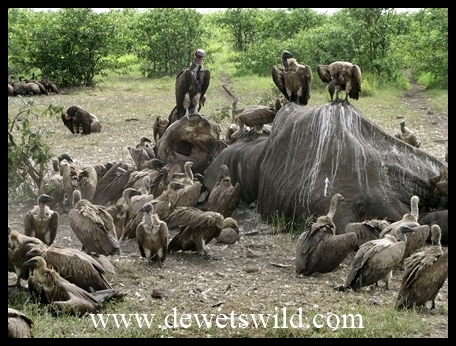
Vultures cleaning up the carcass of a tusker that died almost on Mopani’s doorstep

Claiming the road as his own, and who’s going to disagree?

Elephant procession

Lone elephant bull

Giraffe
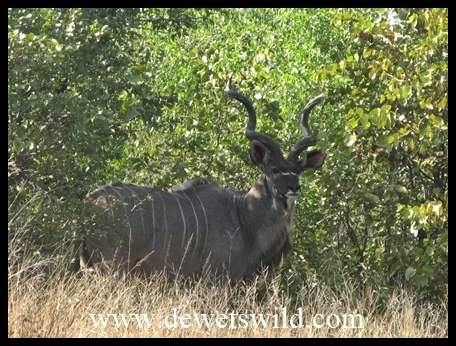
Kudu bull

This lion gave us a terrible fright, as we stopped right next to him without knowing he’s there (we were watching a herd of tsessebe at that moment)

Lions quenching their early morning thirst just a kilometer from Mopani

Reedbuck are frequently seen in the Nshawu Vlei
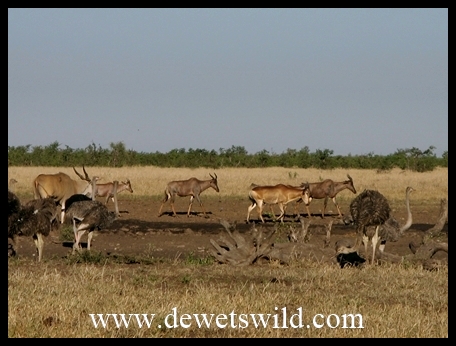
Tinhongonyeni waterhole, with three rare antelope in one shot: eland, tsessebe and Liechtenstein’s hartebeest

Tsessebe are seen more frequently near Mopani than anywhere else in the Kruger Park
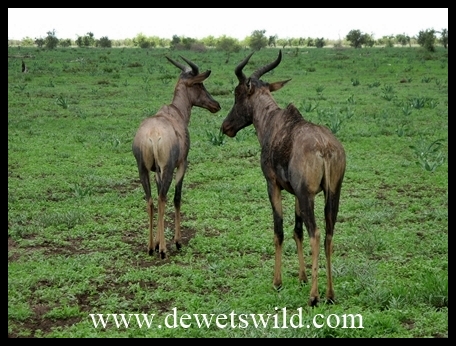
More tsessebe. Guess where? Tinhongonyeni!
Just south of Mopani, the Shipandani Hide, which overlooks a waterhole in the Tsendze River, offers a very different overnight experience as a single group of guests at a time may occupy the hide between sunset and sunrise.
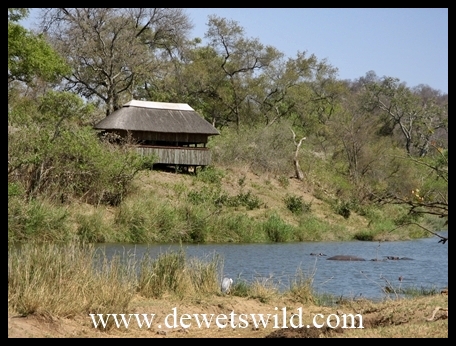
Shipandani Hide

The neighbours at Shipandani
Mopani is also special to the de Wets for one more reason: it is here, in the glow of a magnificently romantic African sunset, that Marilize and I got engaged!

The scene was set to get down on bended knee!

Pingback: Spring in Kruger: September 2014 | de Wets Wild
What an incredibly wonderful and beautiful place. Your photos are magnificent, as of course, are the animals.
LikeLike
Thank you Dendymactoodle! Mopani’s a favourite of ours, it’s where I asked Marilize to marry me – and plain to see, she said yes 😀
LikeLike
Pingback: Buffaloes of the Mphongolo | de Wets Wild
Pingback: Marvelous Mooiplaas | de Wets Wild
Pingback: Winter in Kruger, Satara August 2014 | de Wets Wild
Pingback: Autumn in Kruger: Orpen, April 2014 | de Wets Wild
Pingback: Saturated | de Wets Wild
Thanks for your comment on my blog re Featherbed Nature Reserve. It’s worth a visit – unfortunately cannot recall the price. Their website is http://www.knysnafeatherbed.com.
You have an interesting blog and superb photographs!!
LikeLike
Thank you very much for your visit and kind comments, and the info on Featherbed!
LikeLike
Lovely post guys. Another one that makes me really homesick. Great photos too. You always know how to bring back some great memories. Have a great weekend.
LikeLike
Thank you Joey! Hope you and Marks also have an enjoyable weekend!
LikeLike
Do you guys normally camp or stay in units when you go into the bush?
I have started looking for a camper and am not sure which will be the best option?
LikeLike
We use both options Killaval, but when we do go camping it’s always with tents, so unfortunately I’m not able to give you good advice on campers or caravans. Sorry!
LikeLike